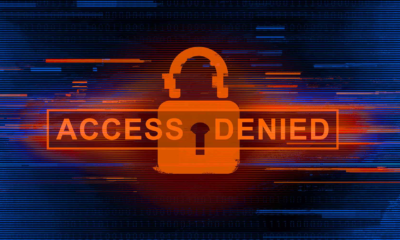Databases
Understanding The Science Behind Encryption

Encryption is a process that takes plain text and scrambles it into an unreadable format. This is done to protect the data from being accessed by unauthorized individuals. This article will discuss the science behind encryption and how it works. We will also explore some encryption applications and how they are used to keep information secure.
What Is Encryption?
Encryption is a technique used to protect data or communication from unauthorized access. It uses mathematical algorithms to transform the data into a secure code authorized users can only decrypt. Encryption can protect text, images, and even video files. One of the most popular encryption methods is asymmetric cryptography, which uses a public and private key pair.
The public key can be shared with anyone, but the private key must be kept secret. When data is encrypted using the public key, it can only be decrypted using the private key. As a result, asymmetric cryptography provides a high level of security for data transmission.
How Does Encryption Work?
Encryption is a two-way process, meaning the data can be encrypted and decrypted. The method of encryption usually involves four steps:
- The first step is known as the plaintext stage. This is where the data to be encrypted is converted into a format that the encryption algorithm can process.
- The second step is known as the key stage. In this stage, a secret key is generated and used to encrypt the plaintext.
- The third step is known as the ciphertext stage. In this stage, the ciphertext (encrypted data) is created by applying the encryption algorithm to the plaintext and key.
- The fourth and final step is known as the decryption stage. In this stage, the ciphertext is decrypted using the same key used to encrypt it. The decryption process is the reverse of the encryption process.
What Are the Benefits of Encryption?
Encryption is a powerful tool that can be used to protect data from being accessed by unauthorized individuals.
Prevents Data Breaches
Encryption can prevent data breaches by making it difficult for hackers to access sensitive information. In the event of a data breach, encrypted data is useless to attackers as they would not be able to decrypt it. This makes encryption an effective measure for protecting against cyberattacks.
Protects Sensitive Information
Encryption can protect sensitive information, such as medical records and financial data. This is because encrypted data is unreadable and cannot be accessed without the correct decryption key. As a result, encryption provides a high level of security for confidential information.
Maintains Privacy
Encryption can also be used to maintain privacy. For example, many online communication tools, such as WhatsApp and Signal use end-to-end encryption. This means the data is encrypted before it is sent and can only be decrypted by the intended recipient. As a result, end-to-end encryption ensures that communication remains private between the sender and receiver.
How Is Encryption Used in the Real World?
Encryption is used in a variety of ways to keep information secure.
Many email providers use encryption to protect the contents of emails. For example, Gmail uses transport layer security (TLS) to encrypt emails in transit. This means the data is encrypted before it is sent and can only be decrypted by the intended recipient. As a result, TLS provides a high level of security for email communications.
Web Browsing
Encryption is also used to protect data during web browsing. When you connect to a website, your browser uses SSL/TLS to encrypt the communication. This means the data is encrypted before it is sent and can only be decrypted by the intended recipient. As a result, SSL/TLS provides a high level of security for web browsing.
Cloud Storage
Many cloud storage providers use encryption to protect the data stored on their servers. For example, Google Drive uses 128-bit AES encryption to encrypt files at rest. This means that the data is encrypted before storing it and can only be decrypted by authorized users. As a result, AES encryption provides a high level of security for cloud storage.
Conclusion
Encryption is a powerful tool that can be used to protect data from being accessed by unauthorized individuals. Encryption can prevent data breaches, protect sensitive information, and maintain privacy. Additionally, encryption is used in various ways to keep information secure, such as email, web browsing, and cloud storage.



